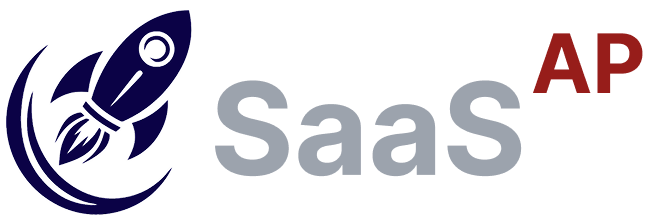In 2025, customer expectations are higher than ever. Consumers no longer just want great products-they expect tailored experiences, exclusive perks, and personalized value. For businesses aiming to survive and thrive in this competitive environment, having a robust Customer Incentive Program isn’t just a nice-to-have—it’s essential.
In this guide, we’ll explore what a Customer Incentive Program is, why it’s critical in 2025, how it benefits your bottom line, and how you can create one that actually works.
1. What Is a Customer Incentive Program?
A Customer Incentive Program is a strategic initiative used by businesses to encourage customers to engage in specific behaviors-like making a purchase, referring a friend, writing a review, or renewing a subscription. These programs typically reward participants through discounts, cashback, exclusive access, loyalty points, or other valuable benefits.
From small startups to Fortune 500 companies, organizations across the United States are turning to Customer Incentive Programs as a way to deepen customer relationships and drive long-term growth.
2. Why Customer Incentives Matter in 2025
In 2025, digital transformation, economic uncertainty, and increased competition have changed the way people shop. Consumers have more choices than ever, and loyalty is increasingly tied to value-added experiences. A well-designed Customer Incentive Program gives your business a competitive edge by offering that value consistently.
Let’s look at a few reasons why they matter more than ever:
- Customer Retention Costs Less: Acquiring a new customer can cost 5x more than retaining an existing one. Incentives help keep your customers coming back.
- Boosts Customer Lifetime Value (CLV): Incentivized customers are more likely to make repeat purchases, increasing the overall revenue per customer.
- Word-of-Mouth Marketing: Reward-based referral programs turn happy customers into your most powerful brand advocates.
- Data-Driven Personalization: Modern Customer Incentive Programs can be linked to CRMs and AI to provide personalized offers at scale.
3. Types of Customer Incentive Programs
Customer expectations are evolving rapidly in 2025, and brands need innovative ways to capture attention and foster long-term loyalty. Depending on your industry, audience, and goals, here are the most effective types of Customer Incentive Programs to consider:
- Loyalty Rewards Programs: These programs are designed to reward repeat customers by giving them points, credits, or perks every time they make a purchase. Over time, customers can redeem these for discounts, freebies, or exclusive merchandise. Popular examples include Starbucks Rewards, which lets users earn free drinks and food, and Sephora’s Beauty Insider, which offers tiered benefits based on spending levels. These programs increase customer retention while building brand affinity.
- Referral Programs: Referral programs tap into the power of word-of-mouth by encouraging satisfied customers to invite friends and family to try your product or service. Typically, both the referrer and the referred person receive a benefit—such as a discount, credit, or free product. A prime example is Dropbox’s referral program, which fueled massive user growth by offering extra storage space to both parties. In 2025, smart brands are enhancing these programs with social sharing tools and real-time tracking dashboards.
- Cashback and Discount Offers: These timeless incentives offer immediate value to customers, either through upfront discounts or cashback after a qualifying purchase. Ideal for e-commerce platforms and subscription-based models, these programs can drive repeat purchases and reduce cart abandonment. Cashback, in particular, appeals to value-conscious shoppers who want tangible rewards for their spending.
- Exclusive Access or VIP Tiers: For high-value or highly engaged customers, VIP programs create a sense of privilege and exclusivity. Benefits might include early access to new products, priority customer service, members-only events, or premium content. These tiers not only encourage more frequent purchases but also deepen emotional loyalty. Customers feel like insiders, not just buyers—making them more likely to advocate for your brand.
- Gamified Engagement Programs: Gamification makes the incentive experience more interactive and habit-forming. Instead of simply earning points, customers can unlock levels, complete challenges, earn badges, or spin digital wheels for a chance to win. This approach is especially effective for mobile apps and digital-first brands. When customers feel like they’re playing a game, engagement skyrockets—and so does brand stickiness.
4. Key Benefits of a Customer Incentive Program
A well-designed Customer Incentive Program is more than just a rewards system—it’s a strategic growth engine that can elevate every stage of your customer journey. From boosting conversions to deepening brand loyalty, here are the top benefits businesses are realizing in 2025:
- Increased Sales: Customer incentive programs directly encourage more frequent purchases by offering compelling rewards, discounts, or points. Whether it’s a limited-time cashback campaign or a points-based system, these programs increase average order value (AOV) and purchase frequency—resulting in a significant lift in revenue.
- Higher Retention Rates: When customers feel recognized and appreciated, they’re far more likely to stay loyal. Members of loyalty programs often exhibit 30% higher retention rates than non-members. These programs foster an emotional connection and give customers a reason to return—especially when rewards accumulate over time.
- Enhanced Customer Insights: Every interaction within an incentive program generates valuable first-party data. This includes purchase history, engagement behavior, and preference trends. Businesses can leverage these insights to personalize marketing efforts, segment audiences more effectively, and forecast future demand with greater accuracy.
- Better Brand Affinity: Customer Incentive Programs help build emotional loyalty, not just transactional loyalty. When customers feel like they’re part of an exclusive group or are consistently rewarded for their support, it cultivates a stronger sense of brand attachment. Over time, this leads to greater customer satisfaction, advocacy, and lifetime value.
- Reduced Churn: In industries such as SaaS, telecom, and subscription retail, customer churn is a constant threat. Incentive-based strategies—like win-back offers, reactivation bonuses, or personalized loyalty campaigns—can help re-engage lapsed users and prevent at-risk customers from leaving. Timely incentives can turn cancellation into continued loyalty.
5. How to Design a Successful Customer Incentive Program
Creating a Customer Incentive Program that works in 2025 means combining strategy, technology, and customer insight. Here’s how to do it effectively:
- Define Your Goals: Start by identifying what you want the program to achieve. Whether it’s driving repeat purchases, increasing referrals, reducing churn, or gathering more reviews, having clear goals will shape your entire approach.
- Know Your Audience: Understand who your customers are and what motivates them. Segment your audience by behavior, preferences, or demographics so you can create rewards that feel relevant and personal.
- Choose the Right Incentives: Offer rewards that match your brand and truly excite your customers. Whether it’s points, cashback, exclusive access, or experiential perks, the incentive should offer real value and align with your positioning.
- Select the Right Tools: Choose modern software to support and scale your program. Use platforms like Smile.io or Yotpo, or integrate AI-driven systems to automate reward tracking, personalization, and customer engagement.
- Communicate Clearly: Make sure customers know about the program and how it works. Use consistent, simple messaging across email, SMS, social media, and your website. Transparency and ease of use are essential to drive adoption.
- Track, Analyze & Optimize: Monitor key performance indicators like participation rate, redemption rate, and customer lifetime value. Continuously test new ideas and refine your program based on real-time feedback and data.
6. Top Tools to Run Your Customer Incentive Program in 2025
Thanks to AI and automation, managing an incentive program is easier than ever. Here are top tools to consider:
- Smile.io – Great for loyalty and referral programs
- ReferralCandy – Focused on e-commerce referrals
- Tremendous – Send digital gift cards and payments for B2B incentives
- Yotpo – Combines loyalty, reviews, and SMS
- Zapier + CRM – For custom workflows and rewards
Make sure the tool you choose integrates with your e-commerce platform, CRM, and marketing stack.
7. Real-World Examples of Customer Incentive Programs That Work
- Sephora Beauty Insider: Members earn points per dollar spent and receive personalized product recommendations. VIP tiers encourage deeper engagement.
- Amazon Prime Rewards: Combining cashback, free shipping, and exclusive content keeps Prime members incredibly loyal—and spending more.
- T-Mobile Tuesdays: Every week, T-Mobile users get freebies and discounts. It’s a low-cost initiative that significantly boosts satisfaction and retention.
These examples show that a well-built Customer Incentive Program delivers both short-term wins and long-term brand equity.
8. Common Mistakes to Avoid
Even the best intentions can flop without the right execution. Avoid these common pitfalls when launching a Customer Incentive Program:
- Overcomplicating the Structure: Keep the rules simple and transparent.
- Offering Weak Incentives: The reward must feel worthwhile.
- Failing to Market It: If customers don’t know about your program, they won’t use it.
- Ignoring Fraud: Monitor for duplicate accounts or abuse.
- Not Measuring Results: Use KPIs to determine success and make data-driven decisions.
9. KPIs to Track Your Program’s Success
To ensure your Customer Incentive Program is working, monitor the following key performance indicators:
| KPI | Description |
| Participation Rate | % of customers who join the program |
| Redemption Rate | % of rewards claimed |
| Repeat Purchase Rate | Frequency of return purchases |
| CLV (Customer Lifetime Value) | Total value per customer |
| Referral Conversions | Sales attributed to referrals |
| Churn Rate | % of customers who stop engaging |
Use dashboards to visualize performance and integrate tracking into your CRM or analytics stack.
10. The Future of Customer Incentive Programs
By 2025, AI will make Customer Incentive Programs even smarter. Expect programs to dynamically adapt to user behavior in real-time, offering tailored incentives that reflect buying patterns, location, and sentiment.
You’ll also see more blockchain-based loyalty systems, giving customers greater control over their points or rewards.
Businesses that invest now in agile, personalized programs will reap long-term benefits—including increased loyalty, higher margins, and a richer customer experience.
Final Thoughts
A Customer Incentive Program is no longer optional—it’s a growth engine. Whether you’re running an e-commerce brand, SaaS platform, or B2C retail chain, incentives offer a powerful way to engage, retain, and delight your customers.
In 2025, personalization, automation, and experience will drive buying decisions. A smart Customer Incentive Program puts you at the center of all three.
So, what are you waiting for? Start rewarding your customers today—and watch your business grow tomorrow.
SaaS Affiliate Partner empowers SaaS companies to accelerate growth by building high-performing affiliate partnerships. Our intelligent platform and comprehensive SaaS Tools Directory make it easy to connect with top affiliates, manage relationships, and drive sales within a seamless, results-driven ecosystem. Whether you want to list your SaaS product or find the perfect affiliate partners, we simplify the entire process to help you scale faster.
FAQs on Customer Incentive Program
A Customer Incentive Program is a strategic system that rewards customers for taking specific actions-such as making purchases, referring friends, or leaving reviews—to increase engagement, loyalty, and repeat business.
In 2025, competition is fierce and customer expectations are higher. A Customer Incentive Program helps retain existing customers, attract new ones, and boost revenue through personalized rewards and loyalty-building strategies.
By offering points, discounts, or exclusive access, a Customer Incentive Program makes customers feel valued, encouraging them to return and engage with your brand more frequently.
Popular types include loyalty rewards programs, referral incentives, cashback offers, VIP tiers, and gamified experiences. The best program depends on your customer base and business goals.
Track key metrics like participation rate, redemption rate, repeat purchase rate, customer lifetime value (CLV), and referral conversions to evaluate your program’s performance.
Yes, small businesses can benefit greatly. A well-executed Customer Incentive Program can drive growth by increasing brand loyalty, repeat purchases, and word-of-mouth marketing—even on a tight budget.

